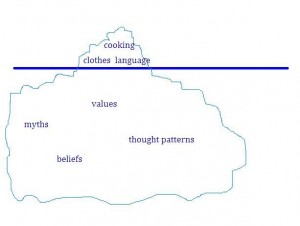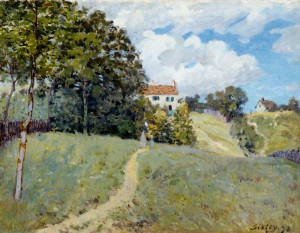In part 1 of this article, you learnt to isolate the concept of identity for each individual.
Today, you’ll get a simple tool to help your children before they struggle to find their identity.
This is critical because your kids will feel much more self-confident.
They’ll have a clear vision where to head to.
They’ll know that they’re not isolated in this journey.
They’ll understand why they always feel different.
They’ll be relieved to feel your support.
In short, you’ll empower your children while understanding yourself exactly what’s at stake.
So, let’s dive in.
In a previous post, we’ve seen that each individual has got 4 worlds. Identity is the most important of those worlds and I chose to associate it with a cozy home.
Identity encompasses the place of our principles, concepts and values.
And what are principles, concepts and values?
Those are the typical constitutive elements of every culture: present but invisible.
Anthropologist Gary Weaver explained it using the iceberg model.
This iceberg analogy of culture basically sets all what you can see, hear and touch in a culture above the water line.
Typically, those elements are: language, cooking, clothes to name a few examples.
But like the iceberg, culture contains invisible elements, even more important: beliefs, values, thoughts patterns and myths.
Those are involved in the concept of justice, non verbial communication, definition of sanity, conception of time (just to name a few examples) developed by each culture.
So what does it mean?
Building your identity is like building your home.
And this is where I want to introduce to you “the house model”.
When you grow up in the same culture as your parents, you’re building your identity aka. your house little by little always using the same raw materials: stones, tiles, cement for example.
Still, It’s not easy: things can go wrong.
You may not dig deep enough for the foundations or use a weaker balk for the roof but you’re always working with the same raw materials, the ones coming from one single culture.
By changing frequently from country and thus by coming in contact with several cultures, TCK’s have to master the art of assembling many more raw materials to build their house. Stone and tiles one day, brick and corrugated sheet the other day, logs and mixing mud later on.
Moreover, those raw materials won’t be easy to figure out because they are located below the water line, referring back to the iceberg model. Are the children going to be able to decypher those elements. Which one will they pick and choose? For which purpose?
In my case, the equation is simple. I was born and raised in France.
My identity, my world 1, is a solid house built in stones with roof tiles on the top.
Smell of cake comes from the kitchen and the view through the window is a field scattered with fruit trees on a beautiful sunny day.
What about a child whose mother is English, whose father is Syrian, born in the US and having lived in Indonesia and Singapore?
This house – this set of beliefs, values, myths and thought patterns – will be much more difficult to build: it’ll need more skills, more creativity, more time.
But when successfully built, it’ll be a unique edifice, originally and beautifully crafted.
This is why identity is such a challenge for TCK’s.
Now, here’s what you need to do next (because education without practice is not enough)
a. Sit down with your children and explain that building their identity (“becoming who they are”) is like building a house.
b. Search on the Internet for images of houses in all the countries you’ve lived in. Print a few of them.
c. Search for images of houses in the countries you have a relationship with and print a few of them. For example, my kids are French but never lived in France. However, they are influenced by this culture, so we picked up pictures from French homes.
d. Ask your children to build their own house. Cut and paste at least one part of a house in each country (the roof of an Australian house, the walls of a French one, the chimney coming from the UK, a balcony from a Moroccan villa for example).
How does your children’s house look like? And yours?
And then tell me what you experienced. Are you surprised by the results?
Speak your mind in the comments!


